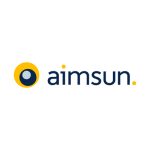Cutting-Edge Technology Set To Slash Wait Times And Boost Bus Reliability Across Our Region
Two cutting-edge digital projects are driving major improvements in our region’s transport network – with early results showing one system already slashing journey times.
The AI-powered Yutraffic FUSION Next Generation Adaptive Control system, developed in the UK, is now up and running across 40% of the region’s target sites – using real-time data to adjust traffic light timings to improve traffic flows.
Early results from the busy A66/A135 junction, in Stockton, shows there has been a reduction of almost a third in average daily delays – with waits slashed by more than half (54%) during afternoon rush hour. And when the numbers are crunched, this translates up to 300 hours* travel time saved using the cutting-edge technology at just one junction.
Tees Valley Mayor Ben Houchen said the results spoke for themselves. He added: “Nobody enjoys sitting in traffic – and it’s brilliant we’re already seeing our investment in this new technology paying off. We want fewer delays, faster commutes, and better air quality. And now, we want this system rolled out right across Teesside, Darlington and Hartlepool.Not only does it make life easier for drivers, but this amazing technology also allows us to get more buses moving and more vital road freight moving faster on our roads.We’re proud of the digital firsts we’ve pioneered on Teesside – I’m proud we’re leading the way once again on our country’s roads.”
Meanwhile, the “Tees Valley Traffic Digital Twin” – designed to detect delays early and cut bus journey times – is also fully up and running at the region’s Urban Traffic Management & Control centre (UTMC), in Middlesbrough.
The UTMC is the nerve-centre for the Tees Valley’s sprawling road network which co-ordinates signs, cameras and signals to make our network as efficient as it possibly can be.
The new Aimsun traffic Digital Twin can automatically identify late-running buses and take real-time action – initially targeting ten key routes in our region to improve punctuality.
It does this by harnessing advanced modelling software through Aimsun Live, AI, real-time data from the roadside and Bus Open Data Source.
The system will be monitored and evaluated by the UTMC over the next year.
Cllr Steve Harker, Leader of Darlington Borough Council and Cabinet Member for Transport and Infrastructure, said: “This is a huge step forward for Tees Valley. We’re not just upgrading our transport network – we’re making it smarter, faster, and more reliable. The Digital Twin shows what our region can do when we harness the best of technology. Over the next year, I’m hopeful it will help make catching the bus a better, more dependable choice for thousands of local people.”
The TVCA has invested more than £2million in the two projects. It’s all part of efforts to update and upgrade the UTMC, which is currently overseen by Middlesbrough Council.
A spokesperson for Middlesbrough Council added: “The initial results are positive and we’re pleased to note that the time it takes to travel through the junction at peak periods has reduced. We will continue to monitor and evaluate the system in the coming months.”
*(based on 500,000 annual journeys)
The ITS UK Member News Service shares announcements and press releases from member organisations. The content is solely the responsibility of the issuing organisation and does not imply endorsement by ITS UK.
